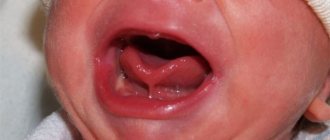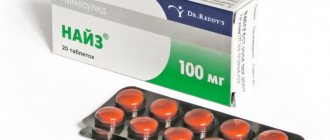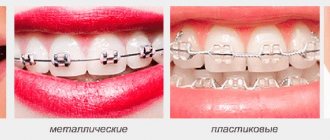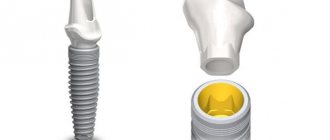Advantages
To describe the benefits of technology, you need to compare it with something. In the case of full-featured 3D modeling, comparison is only possible with plaster in the articulator. But the differences are so striking that such a comparison would not be correct. A fully functional 3D model allows you to predict in real time changes in bite, TMJ shifts, and changes in facial features depending on the changes. Allows you to clearly see and evaluate the final result of treatment, and choose from several treatment options.
Full-featured 3D modeling technology is the latest and one of the most powerful diagnostic tools in modern dentistry.
Modeling stages
- Carrying out a 3D computer tomogram (3d CT) allows you to create a model of the bones of the skull and lower jaw. In our clinic, a CT scan is made measuring 16 by 14.5 cm, which allows us to make a model of both jaws, maxillary sinuses and both temporomandibular joints.
- Intraoral 3D scanning. Allows you to obtain a digital color 3D model of the dentition.
- Digital axiography. Allows you to obtain digital trajectories of movement of the lower jaw, comparing this trajectory with 3D CT, we obtain the trajectory of movement of the articular head of the TMJ.
- 3d model of a face. Several 10 photographs of your face are taken along different trajectories. Artificial intelligence creates a 3D face model based on photo data
- Electromyography and tens therapy allow you to assess the condition and “tension” of the muscles and make adjustments using TENS therapy.
Next, we use a software package with artificial intelligence to build a fully functional 3D model of the dental system. The program determines the position of the teeth from an intraoral 3D scan and superimposes this model on a computer tomogram model. Artificial intelligence identifies the lower jaw and virtually “separates” it from the skull. Superimposes the trajectory of movement of the lower jaw obtained by axiography onto the separated lower jaw and it begins to move along the resulting trajectory. After this, a 3D model of the face is added to this set of studies, and with the help of artificial intelligence we collect this set of studies into a single, fully functional 3D model.
What does a full-featured model mean, you ask? In our case, it allows us to digitally plan treatment. Let's say we have planned gnathological treatment and want to make a muscle relaxation mouthguard. With this fully functional model, we will be able to digitally evaluate the required parameters of the mouth guard, predict the effect on the joint, carry out treatment according to a digital protocol, and simply print the mouth guard on a 3D printer. All work will take no more than 2 days. Or we want to carry out total prosthetics and rehabilitation of teeth with generalized abrasion. We plan “new teeth (crowns, veneers, etc.)” using an intraoral 3D model of teeth, check for hypercontacts, print them on a 3D printer and receive temporary crowns almost on the day of the visit.
Studying jaw models
On the first visit to the patient, impressions are taken of the jaws with plaster, alginate masses or other materials. Marble plaster models are cast from the casts. If it is not available, it is advisable to boil ordinary plaster models in a 25% borax solution (boiling gives the model strength). Models can also be made from fast-hardening plastic.
The base of the model is formed using special devices, rubber molds, or cut by a laboratory technician. The corners of the base of the model are cut along the line of the fangs, and the base is cut parallel to the chewing surfaces of the teeth. The models are marked with the medical history number, last name, first name, patronymic, age and date of impression taking. Thus, the designed diagnostic models are also control models. They make it easier to make a diagnosis, develop a treatment plan and help judge its results.
Deviations from the norm in the position of teeth on models are determined according to three planes (Fig. 238):
- 1) midsagittal plane, running along the middle of the palatal suture. Teeth or groups of teeth may be too close to or too far from this plane. In relation to this plane, transversal deviations are established, in particular unilateral narrowing of the dental arches;
- 2) chewing, or occlusal, plane. It is perpendicular to the midsagittal plane and touches the mesiobuccal cusps of the first molars and the buccal cusps of the premolars. This imaginary plane serves to determine vertical deviations;
- 3) the tuberal plane, which is perpendicular to the two planes mentioned above and passes behind the most pronounced alveolar tubercle. With its help, shifts of teeth or their groups in the sagittal direction are established.
Measurements on models are made using compasses of various designs, symmetroscopes, symmetrographs (Fig. 239) and other instruments.
The basis for measuring transversal deviations is the assumption that the sum of the width of 4 incisors corresponds to a certain width of the dental arch. The Pon index is based on this anthropometric principle. Pont established the existence of proportionality between the width of the dental arch in the area of the first premolars and first molars and the sum of the transverse dimensions of the upper 4 incisors. Based on this pattern, he calculated the indices: premolar 72-82 (average 80) and molar 60-65 (average 64).
To determine the width between premolars and molars, use the following formula:
Pon's measuring points on the upper jaw are the middle of the longitudinal fissures of the first premolars and the anterior point of intersection of the longitudinal and transverse fissures of the first molars. On the lower jaw there is a point between the premolars and a midpoint on the vestibular surface of the first molar (Fig. 240).
For practical purposes, Pon compiled a table of the distances between premolars and molars for different sums of the width of the 4 incisors of the upper jaw (Table 16).
For the lower jaw, the corresponding sum of the transverse dimensions of the 4 incisors is taken from the table for the upper jaw. Measurements taken using the Pon method are useful for recognizing narrowing of the jaws or dental arches. They show the correspondence or discrepancy of the width of the dental arches of both jaws.
The data obtained when determining the width of the dentition using the Pon method is not an absolute indicator of anomalies. The index serves only for indicative research (its values do not take into account individual, gender and racial characteristics).
Similar tables were compiled by Linder and Hart, using other average values (premolar index 85, molar index 65).
Sagittal deviations in the group of frontal teeth are established using average values that show the relationship between the width and length of the dental arch. The reference plane for these measurements is the plane parallel to the tuberal. It passes through Pont's measuring points in the area of the first premolars and crosses the midsagittal plane. A line is drawn from the labial surfaces between the upper central incisors to the indicated plane, which determines the length of the anterior segment of the upper dental arch (Lo) (Fig. 241).
Corkhouse established a certain connection between the sum of the transverse dimensions of the upper four incisors and the length of the anterior segment of the upper dental arch (Table 17).
These figures, reduced by 2-3 mm according to the thickness of the upper incisors, can also be used to determine the length of the anterior segment of the lower dental arch. You can use numbers without correction only with a straight bite.
Corkhouse measurements are useful in studying deformities associated with underdevelopment or overdevelopment of the anterior region of the jaws, with vestibular deviation or palatal inclination of the anterior teeth.
Sagittal deviations in the area of the lateral teeth are established based on their symmetrical location relative to the tuberal plane. Lines parallel to this plane are drawn through the measuring points according to Pon in the area of the first premolars and the symmetrical or asymmetrical position of the lateral teeth of the same name on the right and left sides in the sagittal direction is determined.
When establishing vertical deviations on models, they start from the occlusal plane. The model is held in front of you at eye level; so that this imaginary plane is horizontal. In this way, it is possible to determine which teeth are located above or below this plane (Fig. 242).
The models also measure the depth of the sky. According to Corkhouse, the height of the palate is measured with a three-dimension compass from a straight line connecting the midpoints of the fissures of the first molars to the midpalatal suture, perpendicular to the occlusal plane. The height of the palate is determined in relation to the length or width of the dental arch using the following formulas:
Using models compiled in the position of central occlusion, sagittal, transversal and vertical deviations are also studied, respectively, in the three mentioned planes.
Sagittal deviations are determined by the ratio of the anterior teeth (the amount of discrepancy between the upper and lower dentition in the frontal area) and the lateral teeth, in particular the first molars of both jaws (neutral, distal, mesial bite).
The transversal deviation in the lateral areas is determined based on the transversal relationship of the dentition of the upper and lower jaws. In this case, there may be a correct relationship, when the buccal cusps of the upper teeth overlap the lower lateral teeth, and a reverse, or cross, relationship, when the buccal cusps of the upper teeth lie in the longitudinal intertubercular grooves of the lower lateral teeth.
Vertical deviations in the anterior section are detected depending on the depth of the frontal overlap.
The measurements described above are carried out both on control models obtained before treatment, and on subsequent models made during treatment, after it and during the period of observation of long-term results.
In addition to the mentioned measurements and indices, there are graphical methods. With the help of geometric-graphic images, many authors sought to reproduce the normal shape of the upper dental arch. The most famous diagram is the Howley-Gerber-Gerbst diagram (Fig. 243). It is based on the dependence of the size and shape of the dental arch on the transverse dimensions of the frontal teeth of the upper jaw, which are a segment of a circle, and the lateral teeth, located elliptically, are its continuation.
To construct the chart, measure the width of the three upper front teeth (central, lateral incisor and canine). The obtained data are summarized. This makes up the radius A B. From point B they describe a circle. Based on the radius AB from A, segments AC and AD are laid out on both sides. The CAD arc represents the curve of the six anterior teeth. To determine the location of the lateral teeth, another circle is described. From point E draw straight lines through C and D to obtain triangle EFG. The side of the triangle EFG is the radius (AO) to describe the complementary circle. The radius value is laid off as an extension of the diameter AE, and a circle is described from point O. From point M on an additional circle, points J and H are plotted according to the radius AO. By connecting point H with point C and point J with point D, the HCADJ curve is obtained, which depicts the curve of the entire upper dental arch according to Howley. The lateral teeth should be located on the segments NS and DJ. Herbst combined Gerber's principle (ellipse) and the Hawley curve, replacing the lateral straight lines with the CN and DP arcs. The centers for these arcs are points L and K, lying on a diameter perpendicular to the diameter AM. Arc CN is described by radius LC, and arc DP by radius KD. Thus, the NCADP arch has rounded lateral branches and is a curve corresponding to the ellipsoidal shape of the normal upper dentition.
Depending on the different widths of the 3 front teeth, several different but similar in shape ellipses (diagrams) are drawn on a transparent celluloid plate. This makes it possible to select the appropriate ellipse for each case and compare it with the patient model. Thus, it is easier to use diagrams in practice to determine various deviations in the dentition.
Based on anthropometric and graphic research methods, it is possible to identify such deviations from the norm of the dental system as the abnormal position of individual teeth, deformations of the dental arches, and incorrect jaw relationships. However, these research methods are not flawless, since they are based on the idea that the dentofacial system, which corresponds to average anthropometric data, should be considered normal and that the changes occurring in it are not reflected in the facial skeleton. The use of these methods for the study of orthodontic patients is possible in combination with other methods of analyzing clinical data.







